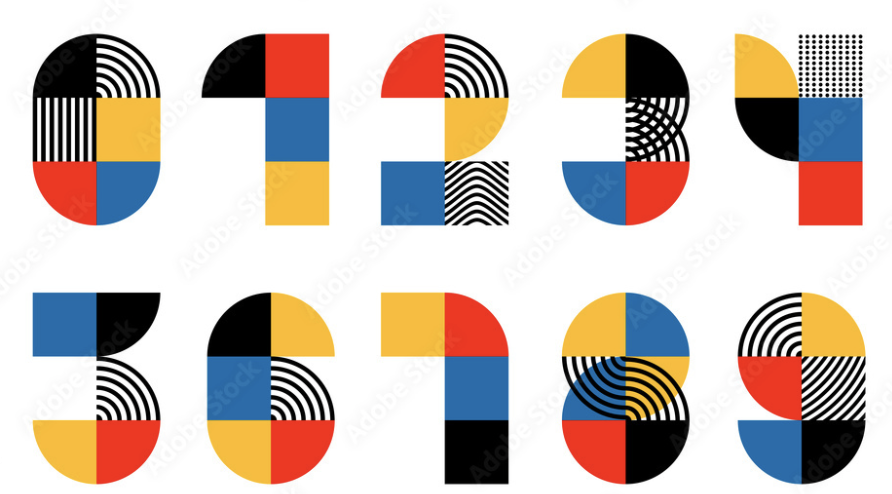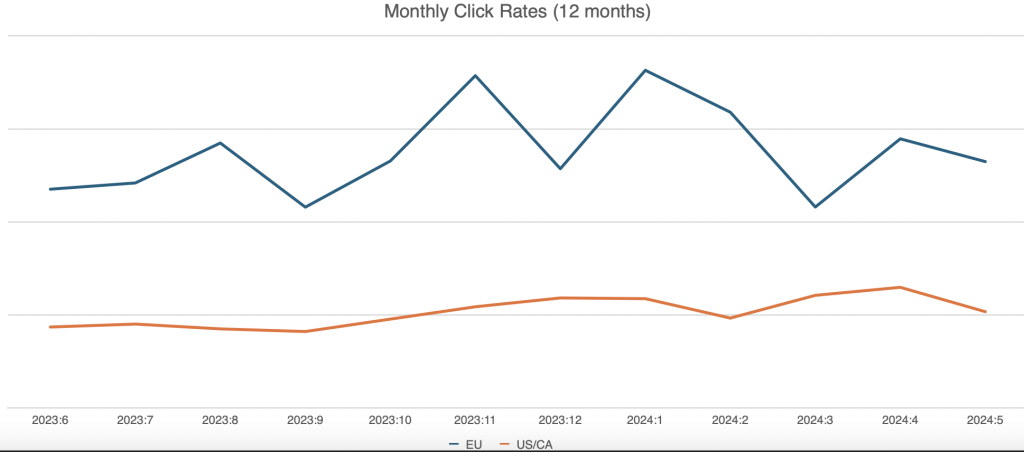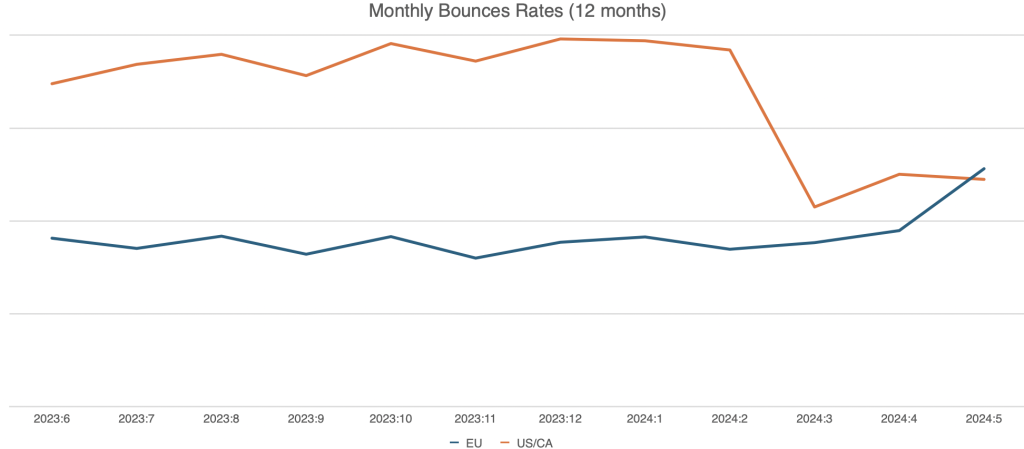Designing by numbers
So, we’ve been working with a client who came to us a few years ago wanting to get away from image heavy, WYSIWYG coded emails for their EU region. Meanwhile their US region continued to do things in their traditional manner, not the traditional manner. Things were going okay until they had a crisis of resource and over the last 6 weeks have had to revert to type, and their EU emails have gone back to being the very samey, very US style. The new management team asked us to justify the benefits of going back to proper design and properly hand coded emails with live text and background images, and generally all the cleanliness in the code that comes from not getting a machine to do it.
We gave them the justifications:
- Better delivery
- More clicks
- More consistant rendering
- Better user experience
- Fewer unsubscribes
- More on-brand
- Higher revenues

Ultimately, well designed and hand coded emails would give them small long term gains, they would getter better delivery, better engagement, less churn – not a silver bullet on its own but a really, really good long term strategy. Unfortunately, we felt this advice was falling on deaf ears. We knew the argument that to increase profits you either need more sales or less cost and felt the less cost argument was winning over the opportunity cost argument we were making. Fortunately, we have numbers available to us. Could we prove, using the last year’s numbers that the argument we were making was in fact correct?
So we delved into their data
We had our data team go back and look at a comparison between all factors available to us within their Email Service Provider. We then ran some analysis over those numbers. Since MPP, open rates have been a soft metric and there has been a greater take up of MPP in the US. However their EU data performed at 104% of the US number. But interestingly, in the 6 weeks since changing from proper design and coding to the US style, open rates also fell off by around 104%. Within this period there was also a large data cull in the US of people who hadn’t engaged for a long period and this meant there were 2 months of increased open %’s there. Essentially skewing the figures a little because if you look at the numbers before the cull there it a 116% increase for EU over the US.
More interestingly for me are the clicks, unsubs and bounce rates. As a long term strategy the longer you can keep people engaged on your list and clicking, the higher the revenues. So we took a look at those. The EU emails designed by a designer and coded by hand received approx 3 times the number of clicks per email as the US emails, 3 times! That’s a number so significant as to be impossible to ignore.

When we looked into the unsubscribes and bounces we get a similar story, unsubs for both are well under 0.1% which is below industry average with EU being slightly higher but only very marginally and this can be accredited to the fact there was no cull in the EU data and also the US data is less engaged and as such is less likely or able to unsubscribe. If we look at unsubs as a % of opens then EU is significantly lower than the US.
However, what was really interesting were bounce rates, the ISPs were voting with their servers! Bounces for US emails before the cull were at 2.636% and for the EU were 1.223%. The ISPs don’t like image led, code heavy WYSIWYG emails. Interestingly in May where the EU were no longer hand designing and hand coding the email bounces went up from an average of 1.223% to 1.794%. The big drop in US bounces coincided with the cull of the long term unengaged data but over time will gradually start to increase.

So in conclusion
In a game of inches the opportunity cost of taking short cuts has a dramatic bottom line effect. The stats don’t lie, design great engaging emails, code them by hand, send them regularly and clean your data. A recipe for long term email marketing success over a short term cost saving.


